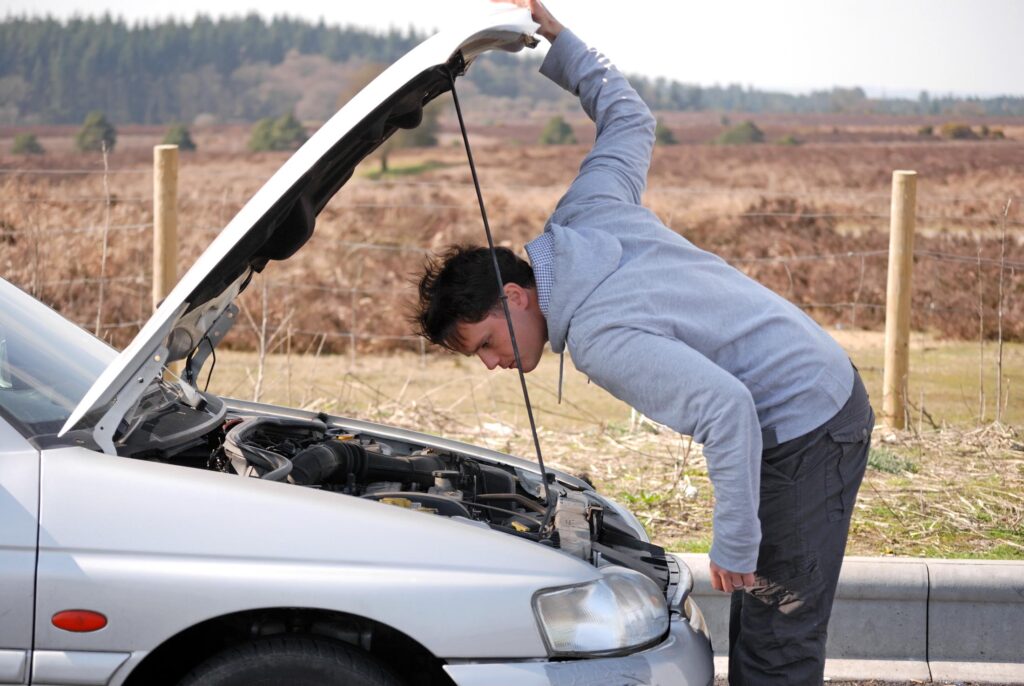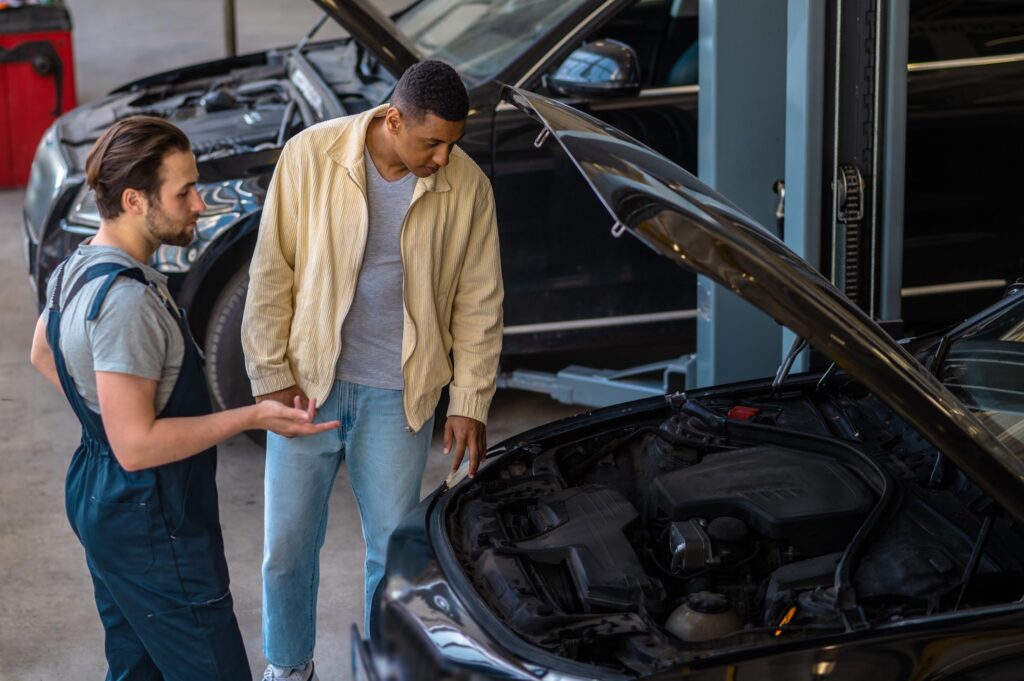Poor driving habits often lead to vehicle problems, such as engine malfunctions and faulty components. This applies to different practices, even ones that seem harmless, like driving over potholes or water. One potential effect of such habits is hydrolock.
What Is Hydrolock?
Hydrolock is when liquid (water or coolant) enters the combustion chamber and cannot be compressed, leading to engine lock.
Hydrolock Symptoms
The symptoms of a hydrolocked engine include turning the key and attempting to start the car only to hear the starter click, as well as the engine trying to turn over and abruptly stopping.
Engine Stalling

Engine stalling happens when the engine is rotating (running) then suddenly stops. Hydrolock can cause it, as the excess water that gets in the chamber stops the engine from rotating since the liquid can’t be compressed.
Hydrolock can cause (engine stalling), as the excess water that gets in the chamber stops the engine from rotating since the liquid can’t be compressed.
–Anthony Harlin, ASE Certified Master Automobile Technician
Engine Doesn’t Turn Over
Engine turn over is the process of starting your vehicle. It’s when the ignition key sends a signal to the starter to turn over which spins the engine to get the engine started.
Crashing Sounds
The crashing noise you hear when the engine is hydrolocked is due to the water filling the cylinders. It’s often followed by the engine shutting off, then a loud thud. It occurs when water gets into the cylinder, leaving no space for fuel combustion.
Effects of Hydrolock
Besides engine stalling, hydrolock can damage other car components. The severity of the damage depends on the amount of water that got into the system. An excessive amount could leave some parts malfunctioning.
Broken Connecting Rod
The connecting rod or con rod is a part of the engine that connects the piston to the crankshaft. A hydrolocked engine may cause the connecting rod to bend or break, especially if the engine is powerful enough to handle large amounts of water.
A broken connecting rod could also lead to permanent engine damage, as it blows holes in the engine block.
Damaged Crankshaft
The crankshaft is essential for engine operation, as it causes linear motion to rotate. Simply put, it converts heat into energy that allows your vehicle to function.

If the connecting rod breaks due to the hydrolock, it can also affect the crankshaft, as it only moves upward. The force of the sudden stop may crack the crankcase, which exposes the shaft. Similarly, hydrolock may also damage the engine bearings.
What Causes Hydrolock?
Liquid that enters the vehicle’s combustion chamber causes hydrolock. There are different ways liquid gets into the vehicle, however:
Driving Through Water
Driving through high water could cause the intake manifold to suck some in, which can get into the engine and, subsequently, the combustion chamber. The intake’s function is to remove excess water, but a large amount could be too much to handle.
Vehicle Modifications
Some modifications to the intake system put it in a compromising position, making it easier for water to get through the corner of the bumper.
Head Gasket Failure
The head gasket seals the engine block to the cylinder head which has combustion in the cylinders, oil and coolant running through it. It also keeps coolant and oil from leaking, which prevents overheating engines.
A damaged or faulty head gasket could lead to hydrolocking, as the coolant can leak into the cylinders. One of the most common causes of gasket failure is accelerated thermal expansion.
Injector Leak
The fuel injector pushes fuel into the internal combustion engine. As such, a cracked injector can lead to fuel flooding within the engine.
Ways to Prevent Hydrolock

Luckily, hydrolock is preventable if you take the proper precautionary steps. Here are some ways you can protect your engine from excess liquid:
Avoid High Water
Driving through floods or any form of high water is the leading cause of hydrolocks. If you find yourself staring down water, slow down and consider if it’s safe to drive through it. Find a different route or stop immediately to prevent getting excess moisture in your engine.
Don’t Park Outside During Heavy Rain
Similarly, avoid parking outside during heavy rain or storms, as they can cause floods. Even if it doesn’t flood, water may naturally seep into the engine.
Avoid Jetting Water Into the Air Filter
If you’re washing your vehicle, don’t spray water near the air filter. Due to the filter’s structure and location, any form of liquid near the area will find its way into the engine and other important components.
Take Your Vehicle to Mechanics for Regular Maintenance
If the engine is on the verge of hydrolocking, experts can easily detect and prevent it from happening. Additionally, the mechanics can also prevent further damage if the engine is already hydrolocked.
How Do Mechanics Fix Hydrolock?
Fixing a hydrolocked engine involves draining the water that seeped into the engine. Here is what you can expect when you have your hydrolocked vehicle repaired:
- Step 1: The water or fluid inside the engine cylinders is drained.
- Step 2: The engine is dismantled and separated from other components.
- Step 3: Engine-related components, such as the bearing, pistons, and cylinders, are inspected.
- Step 4: Faulty parts are replaced.
- Step 5: The vehicle is reassembled and tested to check if the engine is running smoothly.
How Much Does It Cost to Fix Hydrolock?
The price of fixing a hydrolocked engine is quite steep, ranging from $3,000 to $8,000. The final bill depends on the severity of the damage to the engine and other components.
Any information provided on this Website is for informational purposes only and is not intended to replace consultation with a professional mechanic. The accuracy and timeliness of the information may change from the time of publication.






























